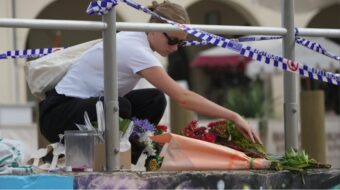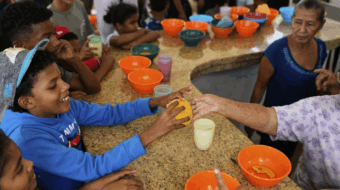
Book review
“Voices from the Other Side”
By Keith Bolender
Pluto Press, 2010, www.plutobooks.com
This is a shocking book. Keith Bolender’s “Voices from the Other Side” offers testimony from Cuban victims of U. S. terror. It casts new light upon state sponsored terrorism by exposing readers directly to the suffering and anger of surviving family members and those who themselves were hurt.
Together with translator Heriberto Nicolas, Bolender conducted interviews throughout the island. One was with Edilfredo Sosa, whose eight-year-old ballerina daughter was to be dancing in Germany: “That’s all she talked about; she was so excited about the trip.” Then in 1981 she and 100 other children died from imported hemorrhagic dengue. “What fault did these children have, what political issue?” Sosa asked.
Those responsible “have a debt with me” said Ana Elba, whose six-year-old daughter died in the unnatural epidemic. She laments that North Americans don’t know about “these acts of terrorism” against “a small country just trying to defend itself.”
In 1971, gunmen arriving in Boca de Sama by sea from Florida conducted a murderous shootout in the tiny village. A bullet destroyed Nancy Pavon’s foot; she was 15 at the time. “I’m constantly thinking of this. Every step I take reminds me of that night. I miss my foot,” she said, “but my hands are fine.”
Maria Dolores Ascunce told about her 16-year-old brother, tortured and killed because he joined the 1961 literacy campaign. Their father only reluctantly allowed him to volunteer. “At the funeral we saw the body … my parents were destroyed … [my father] never recovered.”
Rosario Olegario Velasco confessed, “I refuse to speak [English], because I hate the Americans for what they did.” In 1960, her shipyard worker husband Arturo and 100 others were killed in the explosion which destroyed the French ship Coubre, docked in Havana and laden with armaments. Severely burned, Arturo wanted to see his four-year-old son before he died. “It was terrible,” Rosario said, “the child started screaming, ‘What happened to my father?’ No one had the right to kill this person,” she concluded.
Haymel Espinosa Gomez’ father co-piloted the Cubana airliner that was blown up and plunged into the sea in 1976, killing 73 passengers and crewmembers. “What we have gone through” she likened “to the victims of September 11.”
That crime engineered by Orlando Bosch and Luis Posada, who later found safe haven in Florida, led to the death of Jorge de La Nuez’ father, a fisherman. “I was behaving badly [in school] waiting for my father to come home from his trip,” Jorge said, “My father was my life, I used to see my life through his eyes … I thought, how could my father not come home, he’s cheating me.”
Bolender summarizes the history and operation of each mode of terrorism which so profoundly affected those he interviewed. Some of these incidents, while not forgotten by the Cuban people, may be new to U.S. readers, like attacks on fishermen and workers showing movies to country people, attacks in department stores.
He discusses the appalling Operation Peter Pan (1960-1962), that project of the Roman Catholic Archdiocese of Miami, the U.S. government (Department of State and CIA), and frightened parents that caused 14,000 children to leave Cuba, unattended.
The author traces the lineage of Cuban national identity, crucial to forging unity and dedication to independence. Both are essential antidotes to terror aimed at making Cuba ungovernable through fear and division. Cuba’s enemy, suggests Bolender, tries to foment a siege mentality in hopes it will promote governmental repression that nourishes discontent.
His introductory chapter also touches upon U.S. annexationist yearnings, from the U.S. nixing of Cuban independence in 1898 through U.S. domination of Cuban society from then until 1959.
Bolender’s valuable and compelling book concludes with a plea for the Cuban Five, five men jailed in the United States for fighting terrorism. First hand testimony as to the nature and effects of terrorism demonstrates exactly why Cuba acted to defend itself. The government’s main recourse was to send men to Florida to monitor and report on the plotters.
Until Bolender’s book came along, this reviewer didn’t understand the criminal depths of the terrorist assaults against socialist Cuba.










